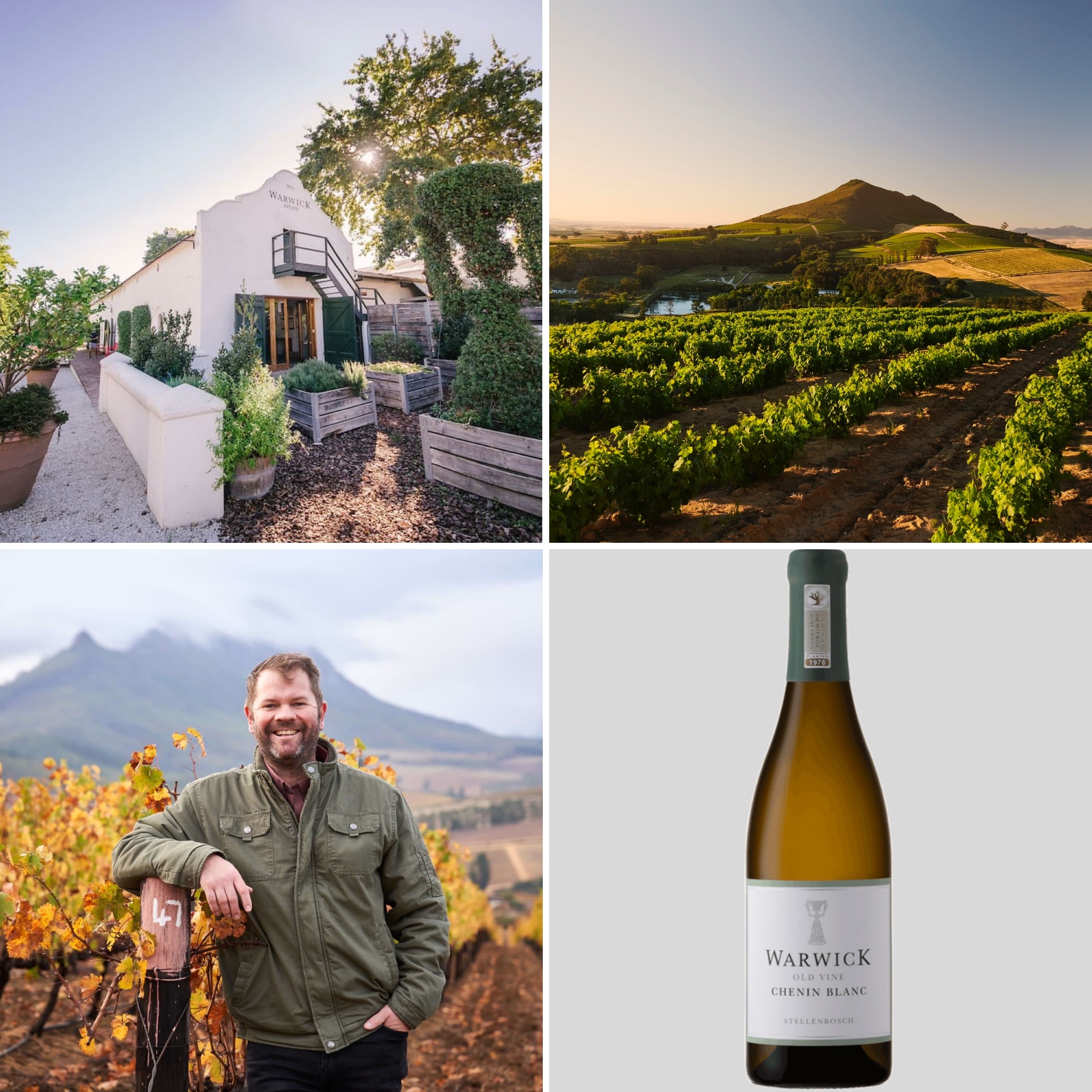The Evolution of the Warwick Winery: A Tale of Heritage and Progress.
The Warwick Wine Estate’s history is deeply intertwined with South Africa’s vinicultural heritage. Established in the late 18th century, the estate has experienced various ownerships and faced numerous challenges. Yet, throughout its existence, one constant has remained: a passionate commitment to producing exceptional wines.
The estate’s picturesque landscapes, replete with lush vineyards against the backdrop of dramatic mountain ranges, are more than just aesthetically pleasing; they provide the perfect terroir for cultivating a range of grape varietals. The Warwick Winery, a beacon of vinicultural excellence, has a rich tapestry of history woven with dedication, innovation, and a sense of continuity.
In a recent interview we had the pleasure to chat with Warwick’s present winemaker, JD Pretorius, who took us along on a journey through transformation, with respect to the estate’s heritage. Center point of attention in our chat? Warwick’s Old Vine Chenin Blanc.
The Ratcliffe Family and their Legacy
For over five decades, the Ratcliffe family held the reins, with Stan and Norma Ratcliffe bequeathing the mantle to their son, Mike. Norma Ratcliffe was the first woman to become a member of the prestigious Cape Winemakers Guild and Mike’s tenure marked a pivotal phase for the winery, not just in terms of production but also in the realm of marketing and sales. Under their leadership, Warwick Winery surged ahead, enhancing the volume and recognition of the brand in the local market. The Ratcliffe’s strategic vision and relentless pursuit of excellence took the winery into its ‘next gear,’ solidifying its position on South Africa’s wine landscape.
However, 2017 saw a significant shift in the winery’s ownership. The Ratcliffe family passed the baton to an American investment company. This transition led to an overhaul of the winery’s leadership team, with Mike branching out to launch his own venture and several other stalwarts following suit. While this might seem like a paradigm shift, the new team was deeply committed to building on the legacy they inherited.
Warwick’s wine portfolio is as diverse as it is distinguished. The winery is renowned for its Cabernet and Cabernet Franc, with the latter being its flagship offering. It’s noteworthy to mention that Warwick made history by being the first to bottle single variety Cabernet Franc in South Africa back in 1989. This pioneering step cemented its reputation and expertise with the variety.
In essence, Warwick Winery stands as a testament to the harmonious blend of heritage and progression. It embodies the spirit of continuity, cherishing its roots while branching out towards the future with grace, tenacity, and a glass of exquisite wine in hand.
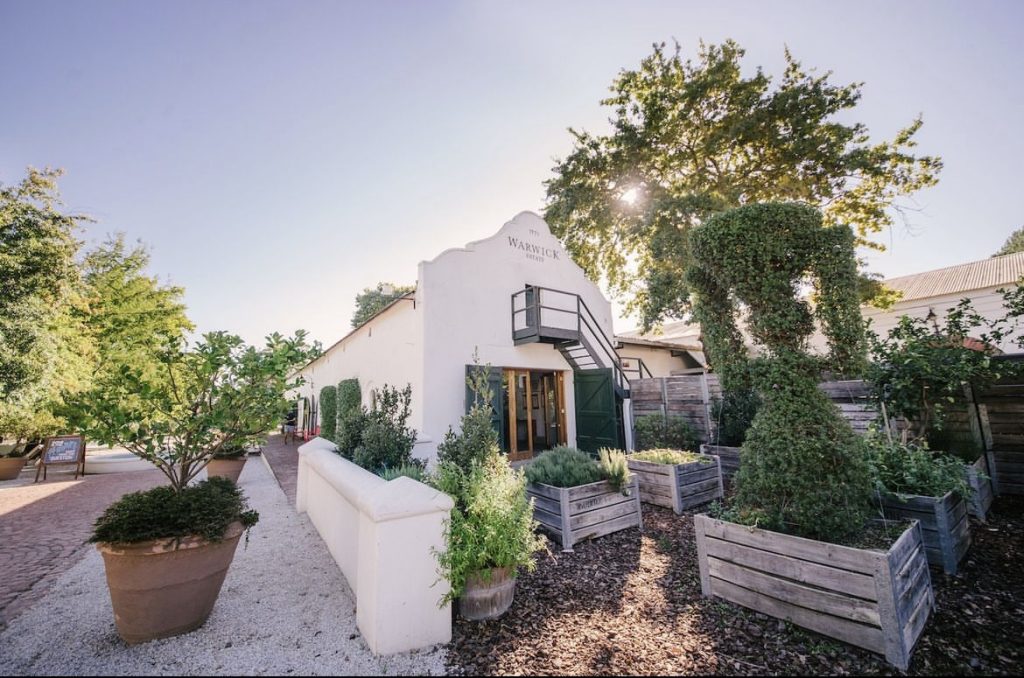
JD Pretorius and His Journey with Warwick Wines
In 2019, Warwick Wines ushered in a fresh chapter in winemaking by welcoming JD Pretorius to its esteemed winemaking team. JD’s joining marked the culmination of a rich tapestry of experiences and an earnest passion for creating wines that spoke of their terroir.
Having completed five vintages with Warwick by now, JD reminisces about 2019 as the year he embarked on this new adventure, producing his inaugural vintage for the vineyard. However, the path that led him to Warwick is equally noteworthy. Before joining the Warwick Estate JD graced the winemaking team at Steenberg in Constantia for a commendable 11 years. Being a part of the illustrious Graham Beck family, his time at Steenberg instilled in him a penchant for white wines, which formed 80% of their produce.
Yet, the shift to Warwick presented a fascinating twist in JD’s winemaking journey. From predominantly producing white wines, he transitioned to crafting wines where 80% was Cabernet Sauvignon. While this might seem like a seismic shift in the varietal mix, JD embraced it with enthusiasm. He opines that the transition has been among the most exhilarating aspects of his winemaking career. While JD is quick to clarify that he doesn’t make red wine in the same way as white, the ethos remains consistent. His penchant for freshness, brightness, acidity, and finesse finds its way into the red wines he crafts. Drawing upon his white wine philosophies, JD’s touch has rendered Warwick’s red wines lighter and fresher, setting them slightly apart from their predecessors.
Under JD’s astute craftsmanship, Warwick Wines continues to flourish, garnering acclaim and appreciation. His journey, from Steenberg’s white wine dominion to Warwick’s Cabernet Sauvignon landscape, highlights the adaptability, skill, and passion he brings to the table. Warwick and its patrons are undoubtedly in for more delightful vintages in the years to come.
When queried about potential changes in the vineyard’s wine variety post the 2017 transition, it was clarified that the essence remained largely unchanged. The aim was to honor the brand’s history and the Ratcliffe family’s heritage while ushering in modern innovations. This conscious decision to preserve the winery’s identity is palpable in its ambiance. The Cape Dutch architecture lends a rustic charm, and the family-friendly environment brims with vitality and energy, a sentiment intrinsic to the Warwick brand. The sole significant addition post-2017 has been the introduction of Chenin Blanc to the vineyard’s repertoire, a chapter we will now shine our light on. But first let us have a look at the position of Chenin as one of South Africa’s most celebrated grape varieties.
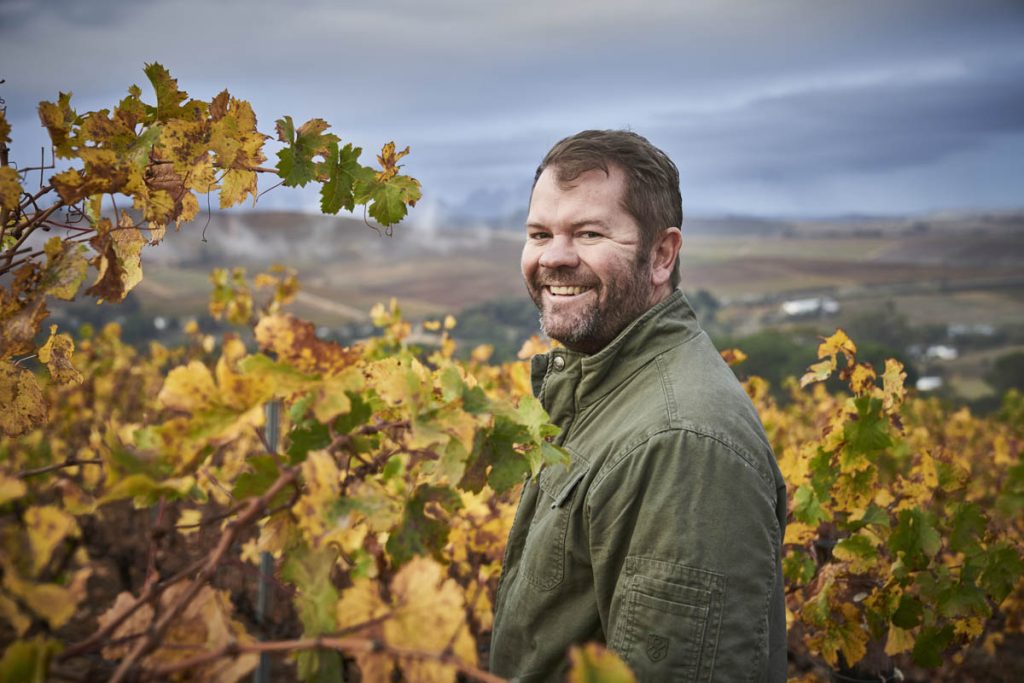
The Tale of Chenin Blanc in South Africa
The adaptive capabilities of grape varieties in response to their environment are fascinating and enlightening, especially in the context of climate change. South Africa’s Chenin Blanc offers a particularly striking example of this evolution.
Historically, Chenin Blanc, a white wine grape variety originating from France’s Loire Valley, has experienced a significant transformation in South Africa. Over the past several centuries, this variety has mutated and adapted to South Africa’s unique climatic conditions, distinct from its original French home. In fact, the top-tier Chenin Blanc wines produced in South Africa today are said to bear a closer resemblance to the stylistic approach of Burgundy than that of the Loire.
This transformation is not just about the flavor profiles or the wine’s body but also about the grape’s very nature. The idea is grounded in the understanding that these vines have not merely adapted but have almost morphed into a different variety altogether, especially the old vines. Over the years, these vines have undergone a rigorous natural selection process. Those that survived and thrived were best suited to South Africa’s conditions, producing superior wines and signifying their compatibility with the local terroir. Among old vine varieties in the region, Chenin Blanc holds a dominant position, further attesting to its natural fit within South African vineyards.
It is essential to recognize that these differences aren’t about superiority or inferiority but about evolution and adaptation. A Chenin Blanc from the Loire will inherently differ in style and character from one cultivated in South Africa. This difference is not merely about taste but about centuries of adaptation, evolution, and the narrative of a grape variety that journeyed from one continent to another, evolving with time.
As we confront the challenges of climate change, the story of Chenin Blanc serves as a testament to the resilience and adaptability of nature. It reminds us of the beauty of evolution and the wonders that can emerge when a variety is given time and the right conditions to grow and transform.
Climate Change: Prepared by Tradition and Terrain
The implications of climate change on viticulture cannot be ignored, with rising temperatures and changing weather patterns having a considerable effect on wine regions across the world. The unique positioning and history of Warwick Wine Estate, however, provide it with a nuanced perspective on this global concern.
Surprisingly, South African wineries have been largely insulated from the drastic changes that other regions have encountered. While Europe grapples with sudden temperature spikes from a typical 25 degrees to highs of 35, the estate has been accustomed to such temperatures for decades. This historical familiarity with high temperatures ensures that both the plants and the winemakers have developed resilience and adaptability over time.
A pivotal advantage lies in the estate’s long-standing irrigation practices. While not a daily necessity, the availability of irrigation ensures that vines remain hydrated during unusually dry spells. This proactive approach to irrigation, which was set in motion half a century ago, inadvertently prepared the vineyards for the challenges of climate change.
Further aiding this resilience is the selection of grape varieties and the rootstocks employed at the estate. These have been historically chosen for their ability to thrive in drier conditions, a choice that regions in Europe hadn’t prioritized until recent years due to their traditionally wetter climates. In a twist of fate, some European regions, which once struggled to ripen grapes, now face the opposite challenge.
Warwick’s journey showcases a blend of preparedness, forged not by anticipation of future challenges, but by past realities. As the world moves into uncertain climatic times, the estate’s story provides hope and a blueprint on how deep understanding and adaptability can be a vineyard’s best ally.
From Brandy Roots to Fine Wine: The Story of Warwick’s Old Vine Chenin Blanc
Now let us take a look at Warwick’s take on Chenin Blanc, more particularly Warwick’s Old Vines of Chenin Blanc. Nestled just a kilometer down the road behind Kanonkop, the property holds a special place in Warwick’s illustrious journey. Acquired about six months after the main Warwick estate, it is the home to Warwick’s unique ‘Old Vine Chenin Blanc’.
This Chenin Blanc vineyard has a rich and captivating history. Originally planted in 1978, it was exclusively designed for brandy production, not fine wine. Reflecting the adaptability and innovation central to Warwick’s ethos, the vineyard transitioned into producing exceptional Chenin Blanc wine. This 6-hectare plot, initially producing a mere 12 tons across its entirety, underwent a transformative journey. With meticulous care, pruning adjustments, and rejuvenation, especially after the challenges posed by the drought, the yield spectacularly increased to 45 tons in recent vintages.
Interestingly, this particular vineyard is geographically distinct from Warwick’s primary cluster, providing it a unique terroir and identity. Its isolation, although only about a kilometer away, gives it a character that is different from the rest. What is fascinating about this vineyard is its structure. Previously a trellis vineyard, over the years, the wires were removed, allowing it to evolve into a high bush vine formation. This appearance, bearing more semblance to a mulberry tree than a traditional vineyard, offers multiple advantages. The significant bunches, with their weight, would typically dangle, making them susceptible to damage, rot, and other conditions due to wind and contact with the ground. The high bush vine structure negates this, ensuring that the grapes are well above the ground, minimizing mechanical damage and allowing for better air circulation. This is particularly beneficial for Chenin, given its propensity for botrytis.
The sheer size of the vineyard, spanning 6 hectares, makes it a considerable part of Warwick’s production. While 2019 saw an experimental batch of 1,500 liters, primarily sold from the tasting room, the subsequent years witnessed increased production and experimentation. The focus was not just on volume but also on achieving the quintessential Warwick quality. The iterative process over the next two to three vintages was driven by a desire to capture the essence of the vineyard in the bottle. The intention was to showcase a product that truly mirrored the character of the land and the spirit of Warwick.
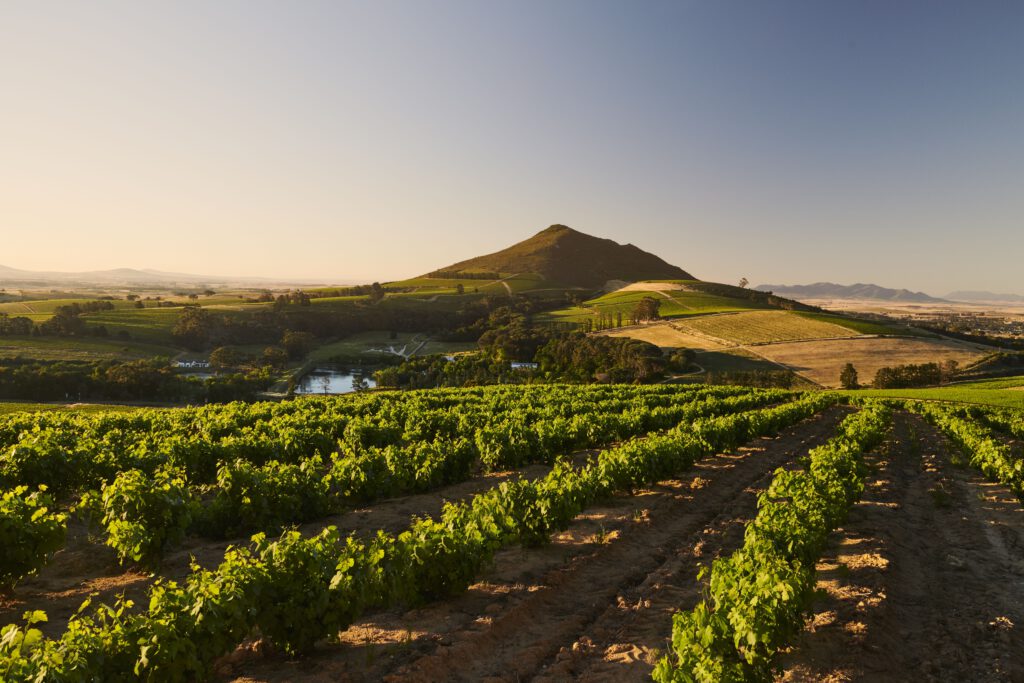
Evolution of Warwick’s Old Vine Chenin Blanc
Warwick’s Old Vine Chenin Blanc is not just about the aged vines; it’s about an ongoing journey to perfection, both in the vineyard and in the cellar.
The vineyard posed unique challenges given the variability in the soil from the top to the bottom. The top is more vigorous, while the bottom sees smaller canopies and more sun-exposed fruits. This variability led to experimentation. Different sections were harvested separately, understanding which parts produced different styles of fruit, eventually leading to a clear differentiation in the kinds of wine each section could produce.
Upon acquiring the vineyard, extensive soil mapping was undertaken to understand the soil’s composition and determine any adjustments needed. There were attempts to balance out the vineyard by employing techniques like mulching and fertilizing to improve vegetative growth in areas where the soil was less fertile.
However, such a big vineyard required a nuanced approach, as what works in one section might not be ideal for another. This granular approach led to the discovery of various stylistic wine components, like high acid, low acid, yellow fruit, ripe fruit flavors, shaded fruit, and more.
In the winery, the process remained simple but intentional. Grapes were whole bunch pressed, similar to Warwick’s Chardonnay method, followed by natural fermentation in old 400-liter barrels. After an unfortunate experiment with new oak which added excessive oak flavor to the wine, the team returned to their trusted old oak barrels, only occasionally introducing a new one to replace the oldest barrels in the set. One crucial change in the winery was ensuring the wine did not undergo malolactic fermentation, as this process could make the Chenin too creamy and reduce its acidity.
Despite the immense challenges posed by external factors, such as the 2022 heatwaves and the COVID-19 restrictions in 2020, the vineyard’s output and the wine’s quality have consistently improved. From a humble start of 1,500 liters in 2019, by 2023, Warwick expects to bottle about 8,000 bottles.
The vineyard, while old in its roots, is still young in Warwick’s hands. Though the vineyard has been around for decades, Warwick has only overseen its evolution for a few years. This journey can be likened to picking up a book and starting in the middle. Technology offers insights into soil and growth patterns, but true understanding comes with time and experience. And while Warwick respects the vineyard’s past, they are keen to add their signature to its story.
The story of Warwick’s Old Vine Chenin Blanc is still unfolding, but with every vintage, it becomes clearer that it’s a tale of respect for the past, passion for the craft, and a vision for the future.
About the Wine
The Warwick Old Vine Chenin Blanc is a striking testament to the splendor of mature vines and the mastery of winemaking. Derived from vines that are several decades old, this wine offers a complexity and depth that’s challenging to replicate with younger vines. From the very first olfactory encounter, one is ushered into a dance of quince, yellow apple, peach, and naartjies, made even more intriguing by a tease of lemon rind. The shy nose, reminiscent of a reserved yet deep character, opens up slowly but after a while rewards with alluring whiffs of ripe pear flesh.
The palate, quite akin to a charismatic host, greets you with an energetic vivacity. Bursting with a sunny, friendly, and smooth fruitiness, it paints a lush picture of ripe pear, yellow plum, and a zesty lemon backing. It’s almost as if the sun’s rays have been bottled, with the bright and crisp acidity forming a radiant backbone to the flavors. Notes of lemon grass, lime, stone fruits, and dried herbs play a symphony, further amplified by hints of patisserie, wood, and citrus fruit that speak of depth and complexity.
What truly sets this Chenin Blanc apart is its age-old wisdom, brought to the fore by the grapes planted as far back as 1978. Their legacy can be tasted in the wine’s expressive and nuanced aromatics; a beautiful mosaic of pear puree, wet straw, honied white peaches, and a gripping stony minerality. The palate follows suit with a tantalizing depth, showcasing rich glycerol layers of tangy tangerine glacé, candied yellow fruits, quince, and honied yellow plum. The intensity of the old vine fruit is undeniable, making a profound statement about its origins.
Yet, amidst all this richness and concentration, the Warwick Old Vine Chenin Blanc remains impeccably balanced. Its precise focus, the racy minerality, and the structural acidity ensure that every sip is a delightful journey, ending with a lingering mineral finish.
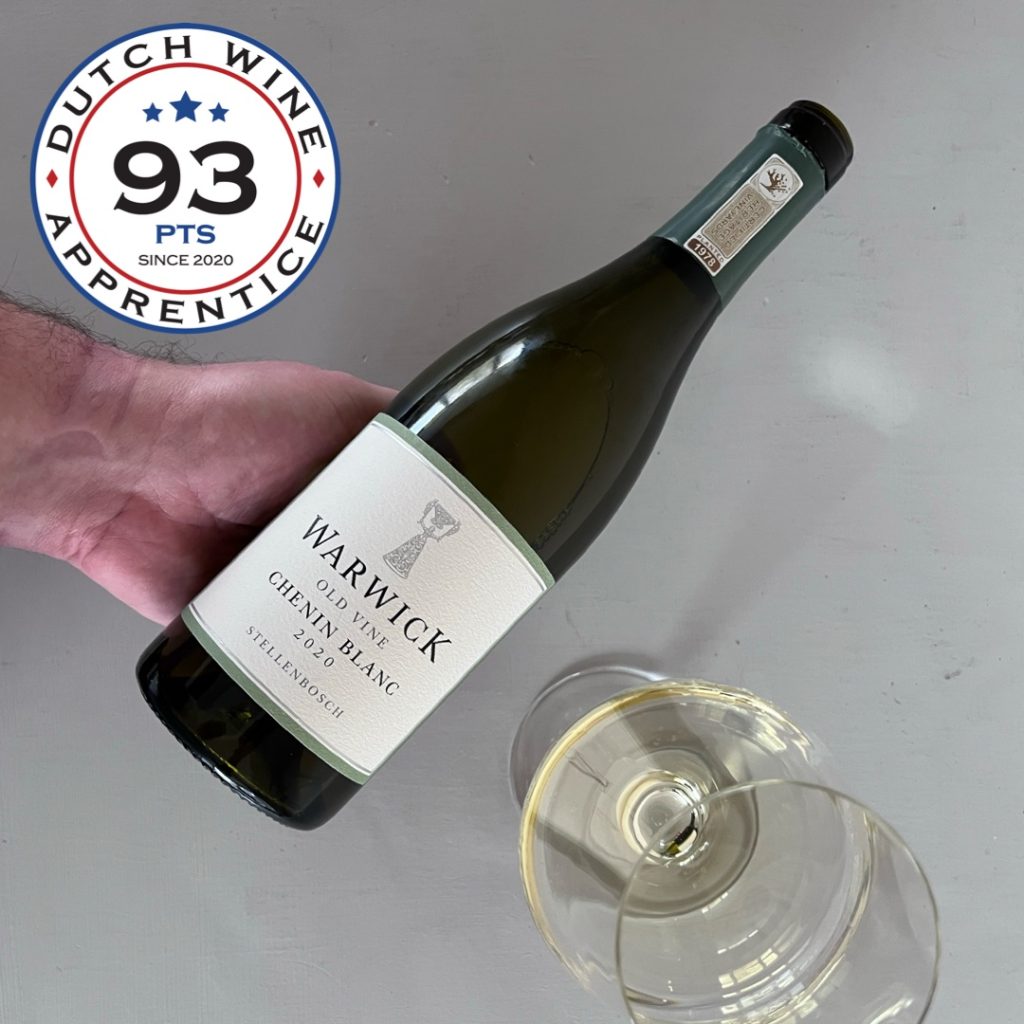
In summation, this Chenin Blanc is an exquisite ode to the prowess of Warwick Wines. Whether you are planning to savor its charm today or let it mature for another decade in the cellar, this wine promises to evolve, revealing even richer fruit expressions and becoming a cherished memory in itself. A truly exciting old-vine Chenin Blanc that is both rich and racy, this is a bottle you would want on your table and in your collection. Cheers to top drawer quality!
We happily award this excellent Old Vine Chenin Blanc with a 93-point DWA score.
This article is written by our own Niels Aarts. Warwick’s wines are imported in the Netherlands by Vinites, and available through associated resellers and hospitality partners. We would like to thank Vinites and Warwick, in particular JD, for their time and this opportunity. Picture credits: Warwick Estate.

